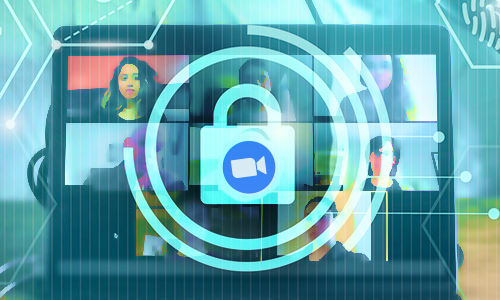Zoom-Bombing is a term for when individuals “gate-crash” Zoom meetings. These uninvited guests could share their screens, make disturbing posts in the chat, and attempt to take over the meeting. We are aware of this happening at UT Knoxville. Our global Zoom settings have prevented this from being widespread. Here are some additional steps that can be taken at the individual meeting level to help prevent Zoom-Bombing.

What to do if you’ve been bombed
If intruders do disrupt your class, one can quickly select Security > Suspend All Participant Activities, and any participant activity will immediately be silenced and full control provided to the host. You can see the detailed instructions online in the OIT Knowledge Base.
Zoom has provided a Guide to Prevent Party Crashers. Some do not apply to our specific instance of Zoom, but provide a nice overview.
Here are some highlights and a few of our recommendations:
- Do not share your class session links on social media or other public sites.
- Familiarize yourself with Zoom Meeting scheduling options. See Scheduling Meetings.
You will need to make informed decisions about implementing these based on the size of your class. Some of these recommendations may be cumbersome for large classes. There can be trade-offs related to each of these settings. When you schedule your class meeting, consider the following options:
- Start the meeting with the host’s video on.
- Start the meeting with the participants’ video off.
- Mute participants upon entry.
- Require a password to join the class session.
- Disable private chat.
- Zoom has in-meeting chat for everyone or participants can message each other privately. Restrict participants’ ability to chat amongst one another while your event is going on and cut back on distractions. This is really to prevent anyone from getting unwanted messages during the meeting.
- Disable join before host.
- Disable screen sharing for participants.
- You do not want random people in your public event taking control of the screen and sharing unwanted content with the group. You can restrict this — before the meeting and during the meeting in the host control bar — so that you’re the only one who can screen-share.
- Consider locking your meeting after it starts.
- When you lock a Zoom Meeting that’s already started, no new participants can join, even if they have the meeting ID and password (if you have required one). In the meeting, click Participants at the bottom of your Zoom window. In the Participants pop-up, click the button that says Lock Meeting.
- Keep in mind that if you lock the meeting, those inadvertently bumped out will not be able to rejoin.
- Turn off file transfer in chat.
- In-meeting file transfer allows people to share files through the in-meeting chat. Toggle this off to keep the chat from getting bombarded with unsolicited pics, GIFs, memes, and other content.
- Consider using the waiting room feature.
- Meeting hosts can customize Waiting Room settings for additional control, and you can even personalize the message people see when they hit the Waiting Room so they know they’re in the right spot. This message is the perfect place to post rules or guidelines for your meeting.
- Remove unwanted or disruptive participants.
- From that Participants menu, you can mouse over a participant’s name, and several options will appear, including Remove. Click that to kick someone out of the meeting.
Check out Training and Support for information on workshops and other help you can receive.
If routine work or academic functions are disrupted due to prolonged campus or building closures, you may find it necessary to work, teach, or take a class from off campus. OIT provides a variety of services to connect you with colleagues and students remotely so that work and learning can continue uninterrupted.
In preparation, you should make sure you have tested your access to the following equipment at home:
- Laptop or desktop computer.
- Microphone – this may be built into your laptop or computer, or you may use an external device such as a USB microphone or headphones.
- Webcam – a camera may already be built into your laptop, but you can also use an external USB camera for video conferencing.
- Internet – either commercially provided (ex. Comcast, AT&T, etc), or a wireless hotspot through your mobile phone.
Be prepared! It’s best to know these options will work for you before you actually need them. Test access to your equipment and resources at home before the need arises and contact us if you have any questions.
Need Help?
Contact the OIT HelpDesk.
- Phone: 865-974-9900
- Chat: oit.utk.edu/chat
- Online: help.utk.edu
When your tech is not working as it should, you can check and follow the System Status Center to get updates on outages and maintenance in real time.

 Explore
Explore Write
Write Chat
Chat Call
Call